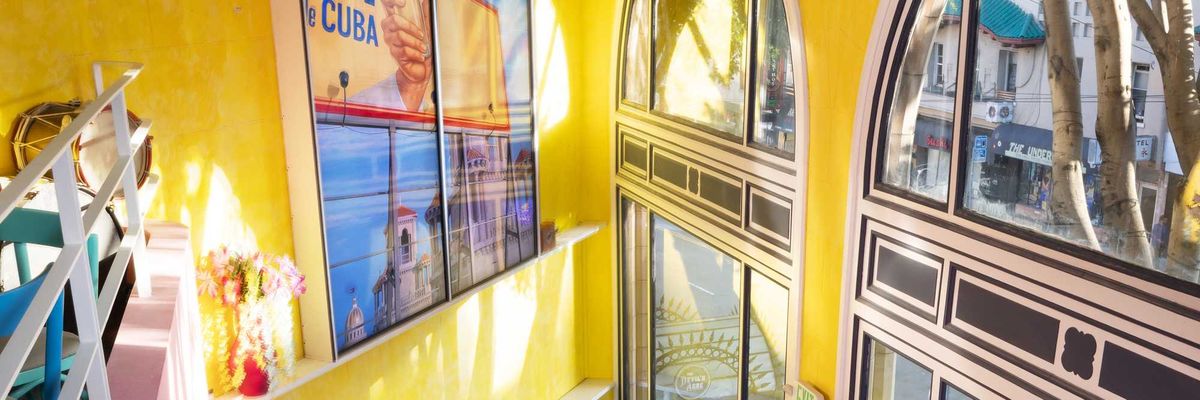How many of us have made our way to California from other parts of the country with wide-eyed notions of the iconic American West, a land where reality hedges between deep romance and absolute modernity. Among the many settlers from distant places is Ed Ruscha, a pioneer in the territory of Pop art who, for half a century now, has drawn his inspiration from the best coast. Now, the de Young Museum celebrates Ruscha's own perspective of our multi-dimensional home region in Ed Ruscha and the Great American West.
Like so many Midwesterners before him and after him, Ruscha, who was born in Nebraska but eventually found his way to Oklahoma City, packed up his Ford at the age of 18 and headed west to Los Angeles. The year was 1956, and Ruscha was bound for art school, but it was on Route 66 that his true education began. As his 1950 sedan careened through the Southwest, the landscapes that would later grace our museum walls—midcentury gas stations and telephone poles dotting long swaths of empty road—slipped past his open car windows, the scenes registering in the mind of an artist who would later render them iconic.
The de Young exhibition, opening Saturday, July 16th, features 99 works that showcase Ruscha's breadth of talent across mediums and throughout the years. Photographs include a dreamlike capture of a 1960s motel pool, while vibrant color screen prints, such as "Standard Station," are immediately recognizable mementos of a time gone by. The works here underscore Ruscha's ability to capture the essence of nostalgia in even the most mundane elements, and his images touch on both the negative and positive aspects of life. In the mixed media piece "Noose Around Your Neck," for instance, the same words cast a sinister shadow over an otherwise beautiful landscape. "Standard Station," meanwhile, places a run-of-the-mill gas station against a pretty orange and periwinkle sunset, suggesting an appreciation for everyday things.
As Ruscha is famous for giving the American vocabulary pride of place in many of his works, the exhibit fittingly closes with a piece that loudly states "The End." But with no context whatsoever, the piece poses a new question: the end of what? Go see and decide for yourself.
// Ed Ruscha and the Great American West opens at the de Young (Golden Gate Park) on July 16, 2016 and runs through October 16th; $20 general admission, deyoung.famsf.org































